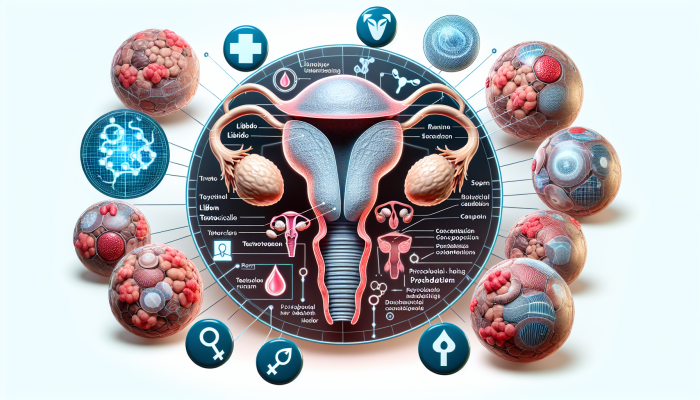Comprehensive Guide to Testosterone Testing Standards for Optimal Health Improvement
Testosterone, frequently hailed as a foundational element of hormonal health, plays a crucial role in the well-being of both men and women. This steroid hormone is essential for driving muscle growth, enhancing sexual desire, sustaining bone density, and promoting emotional stability. Achieving the ideal balance of testosterone levels can greatly enhance one’s quality of life by impacting factors like energy levels, consistency in mood, and cognitive function. Therefore, it is imperative to grasp the testosterone testing standards to detect hormonal imbalances and foster overall well-being.
Understanding the Critical Role of Testosterone in Comprehensive Health

The primary site of testosterone production in men is the testicles, while women produce this hormone in lesser quantities through their ovaries. Although testosterone is often associated with male traits such as muscle mass and body hair, it is equally vital for numerous crucial bodily functions in women. Fluctuations in testosterone levels can profoundly affect libido, sperm production, and cognitive clarity. Low testosterone can lead to a multitude of health complications, including depression, persistent fatigue, and a decline in sexual performance.
Moreover, the influence of testosterone extends into mental health as well. Research suggests that maintaining healthy testosterone levels can foster improved mood and enhance resilience to stress. This underlines the significance of regular monitoring and a solid understanding of your testosterone levels, especially if you observe shifts in your emotional and psychological well-being.
Unveiling the Process Behind Testosterone Testing Standards: Key Considerations
The testosterone testing standards are established based on comprehensive clinical research involving healthy participants. These studies take into account various influencing factors, including age, sex, and the timing of the tests. It is important to note that testosterone levels can vary throughout the day, often peaking in the early morning hours. Consequently, laboratories adjust their reference ranges to accommodate these natural fluctuations.
It is essential to recognize that reference ranges can differ between laboratories, primarily due to variations in testing methods and the demographic characteristics of the populations studied. As a result, what is classified as “normal” in one laboratory might differ in another. This variability highlights the importance of consulting a healthcare professional to accurately interpret your results, considering your unique health context.
Examining the Key Variables Leading to Discrepancies in Testosterone Testing Standards Across Labs
Variations in testosterone testing standards among different laboratories arise from several factors. Each lab utilizes its unique testing methodologies, which can differ in accuracy and sensitivity. For example, some labs may employ immunoassays, while others might utilize advanced methods like liquid chromatography. These differences can result in varied test outcomes.
Additionally, the reference populations selected to establish these standards can significantly impact the resulting values. If a laboratory predominantly tests individuals from a specific age group or ethnic background, the established norms may not accurately represent the general population. Therefore, obtaining test results from a reputable laboratory and discussing them with a healthcare provider is crucial for understanding your findings in the context of your medical history.
Deciphering Your Testosterone Test Results: Key Insights for Better Health

Interpreting the results of a testosterone test can seem overwhelming at first; however, it becomes manageable once you familiarize yourself with the established standards and their significance. Typically, testosterone test results are measured in nanograms per deciliter (ng/dL), with variations occurring due to factors such as age and sex.
Your Step-by-Step Approach to Understanding Testosterone Test Results
The initial step in evaluating your testosterone test results is to compare them against the testosterone testing standards. In general, testosterone levels in men range from 300 to 1,000 ng/dL, while women’s levels usually fall between 15 to 70 ng/dL. Should your results fall outside these established ranges, further investigation may be necessary to determine the underlying causes.
It's important to remember that test results must be interpreted within the context of your overall health. What may appear to be low testosterone levels for one individual could be entirely normal for another, depending on personal factors such as age and overall health. Engaging with a healthcare professional will allow you to assess your results in light of your complete health profile and ascertain whether additional testing or interventions are warranted.
Understanding the Consequences of Low Testosterone Levels
Low testosterone levels, clinically identified as hypogonadism, can lead to a myriad of significant health issues. Common symptoms include a marked reduction in libido, chronic fatigue, decreased muscle mass, and emotional fluctuations. If you experience any of these symptoms, it is wise to consider undergoing a testosterone test to determine if your levels are below the normal range.
The underlying causes of low testosterone can be varied, encompassing both medical conditions and lifestyle factors. Conditions such as diabetes, obesity, or disorders that affect the pituitary gland can hinder testosterone production. Furthermore, environmental factors like exposure to harmful chemicals or endocrine disruptors may also contribute. A thorough medical evaluation is crucial for accurately identifying the cause and determining the most effective treatment approaches.
The Risks Associated with Elevated Testosterone Levels

Conversely, excessively high testosterone levels can also pose health risks. Abnormally elevated testosterone levels may be associated with medical conditions such as testicular tumors or the misuse of anabolic steroids. Symptoms linked to high testosterone can include acne outbreaks, hypertension, and mood alterations, including increased aggression.
It is crucial not to hastily conclude based solely on elevated results. Engaging in a dialogue with a healthcare professional is necessary to thoroughly assess the findings and consider additional testing to uncover the underlying causes. Additionally, it is essential to discuss the potential risks associated with high testosterone levels, which may include cardiovascular complications and other adverse effects.
Key Influences on Testosterone Levels: Insights for Enhanced Health Management
Testosterone levels are dynamic and can be influenced by numerous factors. Understanding these influences empowers you to make informed decisions regarding your hormonal health.
Age as a Crucial Factor in Testosterone Levels
Age is a significant determinant affecting testosterone testing standards. It is widely recognized that testosterone levels in men typically begin to gradually decline around the age of 30. Although this decline is generally slow, it can have serious implications for both physical and mental health over time.
Women, while generally having lower testosterone levels, also experience a decline as they age, especially after menopause. This decrease can lead to symptoms such as fatigue, reduced libido, and emotional instability. Therefore, it is essential for everyone, regardless of gender, to monitor their testosterone levels as they age and seek medical advice if any signs of hypogonadism appear.
How Your Lifestyle Choices Impact Testosterone Levels
The lifestyle choices you make can have a profound impact on the maintenance of optimal testosterone levels. Engaging in healthy practices such as consuming a balanced diet, participating in regular physical exercise, and ensuring adequate sleep can significantly support hormonal stability. Research shows that exercise, particularly strength training, can boost testosterone production.
On the other hand, risk factors such as obesity, a sedentary lifestyle, and chronic stress can disrupt hormonal equilibrium. Elevated stress levels, in particular, can heighten cortisol production, a hormone that negatively affects testosterone synthesis. By incorporating stress-reduction strategies such as meditation or yoga and leading an active lifestyle, you can greatly enhance your hormonal health.
The Role of Medications and Supplements in Influencing Testosterone Levels
Certain medications can have a significant impact on testosterone levels. Drugs such as corticosteroids, opioids, and specific antidepressants may lead to a reduction in testosterone production. If you are taking medication and have concerns about your testosterone levels, it is advisable to discuss these concerns with your healthcare provider.
Conversely, some supplements that claim to enhance testosterone levels, like zinc and vitamin D, may provide benefits, particularly for individuals with deficiencies. However, it is vital to consult a healthcare professional before beginning any supplementation. A balanced approach that emphasizes a nutritious diet and an active lifestyle is often the most effective strategy for maintaining optimal hormonal levels.
Recognizing Symptoms and Diagnosing Abnormal Testosterone Levels
Being able to recognize the symptoms associated with abnormal testosterone levels is essential for early detection and timely interventions. This process generally includes physical examinations and laboratory assessments.
Identifying the Common Symptoms of Low Testosterone Levels
Symptoms related to low testosterone levels can vary from person to person, but certain common indicators may point towards a hormonal imbalance. Persistent fatigue ranks as one of the most frequently reported symptoms. If you experience a drop in your energy levels that seems disproportionate to other life factors, it could be a warning sign.
A noticeable decline in libido is another critical indicator. Men might find it difficult to achieve or maintain an erection, while women may notice a decrease in sexual interest. Additionally, loss of muscle mass, weight gain, and mood changes such as anxiety or depression can also correlate with low testosterone levels.
When to Consult a Healthcare Provider for Testosterone Testing
If you are experiencing persistent symptoms or have specific concerns regarding your testosterone levels, it is advisable to consult a healthcare professional. Early evaluation can be instrumental in identifying potential underlying health issues and developing an appropriate action plan.
If you are a man over 40 or a woman going through menopause, it may be particularly wise to discuss testosterone testing with your physician, even if you do not exhibit symptoms. Regular screenings can aid in tracking your testosterone levels and making informed health choices.
The Diagnostic Process for Evaluating Testosterone Levels
The diagnostic process for assessing testosterone levels typically begins with a medical consultation, during which your symptoms and medical history are comprehensively reviewed. If your doctor suspects a hormonal imbalance, they may recommend a blood test to measure your testosterone levels.
Testing is usually performed in the morning when testosterone levels are at their highest. If abnormal results are found, additional testing may be necessary to pinpoint the underlying cause. This could involve evaluations of pituitary function or further hormonal assessments. Accurate diagnosis is crucial for creating an effective treatment plan.
Exploring Treatment Options for Addressing Abnormal Testosterone Levels
Upon discovering abnormal testosterone levels, a variety of treatment options may be available. The selection of appropriate treatment often hinges on the underlying cause and personal preferences.
Proven Strategies for Treating Low Testosterone Levels
The management of low testosterone levels may involve testosterone replacement therapy (TRT), which aims to restore normal hormonal levels. TRT can be administered through various methods, including injections, gels, or transdermal patches. This treatment can effectively alleviate symptoms associated with hypogonadism, such as fatigue, lower libido, and reduced muscle health.
However, it is crucial to discuss the potential risks and benefits of TRT with your healthcare provider. While many patients report relief from symptoms, there are associated risks, including cardiovascular complications and possible side effects. Regular monitoring of hormonal levels is often necessary to ensure the treatment’s safety and effectiveness.
Natural Approaches to Boost Testosterone Levels
For those who prefer to avoid hormonal treatments, several natural strategies can assist in elevating testosterone levels. Maintaining a healthy lifestyle characterized by a nutrient-dense balanced diet is essential. Foods rich in zinc, vitamin D, and omega-3 fatty acids can enhance testosterone production.
Engaging in regular physical activity, especially resistance training, is another effective method for stimulating testosterone production. Moreover, implementing stress management practices such as meditation, yoga, or enjoyable recreational activities can help lower cortisol levels, thereby supporting optimal hormonal balance.
Evaluating the Pros and Cons of Testosterone Replacement Therapy
Testosterone replacement therapy can provide numerous advantages, such as enhanced libido, improved mood, and increased muscle mass. However, it also carries potential risks, including an elevated risk of cardiovascular disease, sleep apnea, and prostate complications.
Thus, carefully weighing the benefits and risks of TRT is essential. A thorough discussion with a healthcare professional is crucial to determine whether this treatment aligns with your health objectives. Regular follow-up consultations are also vital to monitor treatment outcomes and adjust therapy as needed.
The Significant Impact of Testosterone Levels on Holistic Health
Testosterone levels have a profound influence on various aspects of health, including mental well-being, bone integrity, and cardiovascular function. Understanding these connections can aid you in managing your overall wellness more effectively.
The Influence of Testosterone Levels on Mental Health
Research demonstrates that testosterone levels can significantly impact mental health. Low testosterone levels are often linked to mood disorders, including depression and anxiety. Individuals with adequate testosterone levels frequently exhibit enhanced emotional resilience and a better quality of life.
Importantly, addressing hypogonadism may lead to positive mental health outcomes. Numerous patients report improvements in mood and a decrease in depressive symptoms after restoring their normal hormonal levels. This underscores the importance of monitoring testosterone levels, particularly in the context of mental health challenges.
The Role of Testosterone in Promoting Bone Health
Testosterone is critically important for maintaining bone health, contributing to bone density and reducing the risk of osteoporosis. Sufficient testosterone levels are essential for preserving bone mass and decreasing the likelihood of fractures, especially in older adults, as declining testosterone levels can lead to increased bone fragility.
Research indicates that testosterone replacement therapy may positively influence bone density in both men and women experiencing hypogonadism. Therefore, monitoring testosterone levels and considering appropriate treatment options is crucial for maintaining optimal bone health.
The Connection Between Testosterone Levels and Cardiovascular Health
The relationship between testosterone levels and cardiovascular health is intricate. Balanced testosterone levels can contribute to improved heart health by affecting lipid metabolism and supporting vascular function. However, excessively high testosterone levels, often associated with steroid use, may increase the risk of cardiovascular diseases.
Achieving a healthy hormonal balance is of utmost importance. Regular monitoring of your testosterone levels and engaging with a healthcare professional will help you navigate these health concerns and maintain optimal cardiovascular health.
Proactive Monitoring and Testing of Testosterone Levels: Essential Guidelines
Taking proactive steps to prepare for a testosterone test and monitor your testosterone levels is vital for sustaining optimal hormonal health. Below are several tips to assist you throughout this process.
Essential Guidelines for Effective Preparation for a Testosterone Test
Proper preparation for a testosterone test is crucial for ensuring precise results. It is advisable to refrain from intense exercise, alcohol consumption, and certain medications, including corticosteroids, at least 24 hours prior to the test. Typically, tests are conducted in the morning when testosterone levels are naturally elevated, leading to more reliable outcomes.
Furthermore, discussing any questions or concerns with your physician before the test is imperative. Adequate preparation can significantly enhance the accuracy of your results and improve your understanding of your hormonal health.
Determining the Appropriate Interval for Testosterone Testing
The frequency of testosterone testing is typically guided by symptoms and medical recommendations. For men over 40, annual testing may be advisable, particularly if concerns about low testosterone levels exist. For individuals undergoing treatment or exhibiting symptoms, more frequent testing may be necessary to monitor testosterone levels and adjust treatment plans accordingly.
Maintaining open communication with your healthcare provider is essential for establishing a testing frequency that aligns best with your individual health needs.
The Importance of Continuous Monitoring of Testosterone Levels
Regular monitoring of testosterone levels allows for evaluating treatment effectiveness and identifying changes in your hormonal health. This is particularly critical for individuals receiving testosterone replacement therapy, as adjustments may be required over time.
By consistently monitoring your testosterone levels, you can collaborate closely with your healthcare provider to optimize treatment and ensure a healthy hormonal balance. This proactive approach can enhance your overall health and help prevent potential health complications in the future.
Frequently Asked Questions Regarding Testosterone Testing Standards
Do testosterone levels fluctuate throughout the day?
Yes, testosterone levels naturally fluctuate during the day, typically peaking in the morning hours.
What symptoms indicate low testosterone levels?
Common symptoms include persistent fatigue, decreased libido, mood changes, and loss of muscle mass.
How do testosterone levels impact mental health?
Low testosterone levels can contribute to mental health challenges, including depression and anxiety.
When should I seek a healthcare provider's advice for testosterone testing?
Consult a physician if you experience ongoing symptoms or have concerns regarding your testosterone levels.
What treatment options are available for low testosterone levels?
Available treatments include testosterone replacement therapy, lifestyle modifications, and natural remedies.
Is testosterone replacement therapy a safe option?
While beneficial for many, testosterone replacement therapy carries potential risks, including cardiovascular complications.
Can supplements help elevate testosterone levels?
Some supplements may be beneficial, but consulting a healthcare professional before use is essential.
What is the typical testosterone range for men?
Normal testosterone levels in men usually range from 300 to 1,000 ng/dL.
Should women consider testosterone testing?
Yes, women can also benefit from testosterone testing, particularly if they exhibit signs of hormonal imbalance.
What is the recommended frequency for testosterone testing?
The frequency of testing depends on symptoms and medical history; however, annual testing may be appropriate for men over 40.
Connect with us on Facebook!
This article was originally published on https://bloodtest.co.uk
The Article: Testosterone Testing Standards: Your Ultimate Guide appeared first on: https://ezbloodtest.com
The Article Testosterone Testing Standards: Essential Guide for You Was Found On https://limitsofstrategy.com

